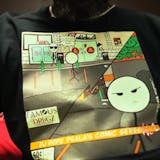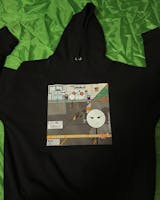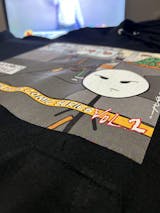DTFThere are many printing methods preferred on clothes. Some printing methods offer a practical alternative for personalized clothing designs. In some methods, you can even make your design yourself without the need for a printer. Printing methods, which are also preferred in business areas, can generally be used in promotional products. Let's look at these versatile printing preferences together!
Digital Printing
Digital printing is one of the advantageous and technological printing choices today. This printing method is applied to every fabric in a practical way and there is no problem such as mold removal. Digital printing is computer generated and applied by transferring the pattern to paper. In this printing process, the design can then be edited through heat and printed on the fabric. In this printing method, colors are enhanced with chemicals.
Transfer Printing
The application of heat transfer after the transfer ink is transferred to the paper is called transfer printing. These chemical transfer inks are generally more preferred for synthetic fabrics. This is because they provide a better color depth.
Etching Printing
Etching printing is also called extract printing. This printing is the process of changing garment colors in selected colors after bleaching. This printing with an additional activator requires a transparent etching. As the activator bleaches the fabric, pigments are added to the ink to re-dye it in the selected colors. For long-lasting use without the need for a base coat, etching is also preferred for garments.
Rotary Printing
Rotary screen printing is done with cylindrical screen prints for each color. The fabric needs to be coated with adhesive to adhere to the printing blanket. During this printing process, the rotary screen printer automatically takes printing paste from the pressure tanks. After all these processes, the fabric is taken to the drying oven.
Sublimation Printing
The printing method applied with special sublimation dyes is called sublimation printing. This printing method is applied on t-shirts by heat transfer press method at 180 degrees. Sublimation dye, which passes from liquid to gaseous state, penetrates the t-shirt. Sublimation transfer printing is cheaper than printing techniques made in laser printing machines. This printing method requires sublimation printer or plotter and heat transfer press machines.
How to Print on C at home?
It's a good idea to create a memory pillow, print an old photo on a fabric, or print your company's logo on t-shirts and distribute them to your customers or employees. In short, it is very advantageous to print both for business purposes and for a special memory. These prints, which were usually made in photographers before, can now also be made at home. DTF transfer printing is one of the new printing techniques in this process and is very practical. So how is this printing method applied to the fabric? The DTF transfer printing process at home is briefly applied with the following steps:
Suitable paper is placed in the printer and a special transfer paper is selected according to the fabric.
At this stage, it is important that the transfer paper is compatible with the t-shirt to be printed, so the instructions should be read.
If the print consists of text, the text should be reversed. If it is a normal picture, it is printed on the appropriate side of the transfer paper. Then cut around the image with a pair of scissors.
Place the fabric on a hard surface to apply the print. After removing wrinkles, place the transfer paper on the fabric and apply heat by pressing with an iron. It is important that you follow the instructions in this process. Otherwise, the colors may not fully penetrate the fabric.
In short, these are the application stages of DTF transfer printing on a fabric. We also prepare this design paper specially for you. We specify all instructions according to the fabric you will apply. You can contact us for more information about DTF transfer.








